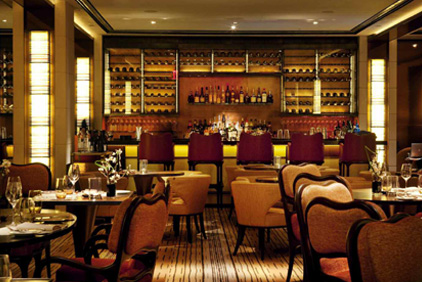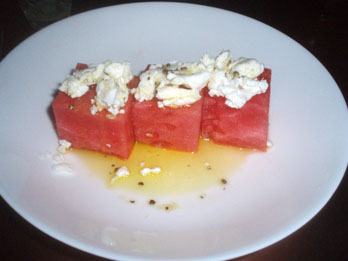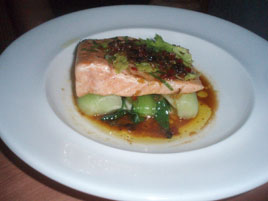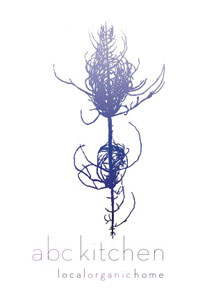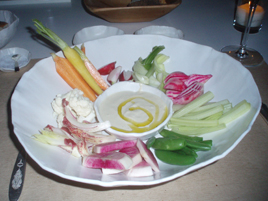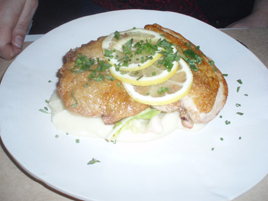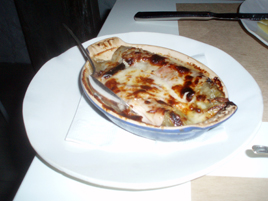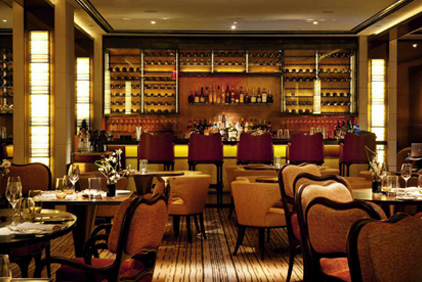
There was a panel discussion last week at Borders TWC, with Danny Meyer, Lee Schrager, Mimi Sheraton, Jean-Luc Naret (head tire man), Jean-Georges Vongerichten, and Kate Krader, with Mike Colameco as moderator.
The occasion was the release of the Michelin 2010 ratings for New York, although a wide variety of subjects was touched upon.
Naret shared an anecdote that is relevant to those who find the ratings baffling. A number of years ago, a restaurant opened outside Paris to scathing reviews. A year later, the tire man gave it a star. People came up to him, and said, “How on earth can you give a star there? It’s terrible?”
Naret replied, “Have you gone lately?” The answer, invariably, was no. Either they hadn’t gone at all, or they had gone a long time a go. Of course, his point was to emphasize the value (as he sees it) of a system where the restaurants are re-visited and judged by what they are doing now, not what they are reputed to have done many months or years or ago.
The panel was asked whether restaurants are reviewed too early nowadays. Every one of them said, in different ways, that once you are charging full price, you are fair game to be reviewed. Danny Meyer, however, said that he thinks good restaurants keep getting better and better over time. But Vongerichten said that a restaurant is at its best in the first two months, and thereafter it is a struggle to keep it that way. That is certainly an accurate description of his own places.
Meyer, in a nice way, pointed out the difference between himself and Vongerichten. Meyer hires chefs who stay full-time, or close to full-time, in their kitchens. Vongerichten launches a restaurant and moves on to the next one. He has been remarkably successful at it; however, he clearly has the problem of ensuring quality in kitchens where he is seldom physically present, whereas Meyer hires chefs who stay put.
They all thought that critic anonymity, though challenging to achieve, is both possible and important. Sheraton said that she once wrote an article for Vanity Fair about all the things a chef or restaurant can change once they know a critic is in the house. She said that after the article was published, a chef acquaintance called her up and said, “You don’t know the half of it.”
Naret, of course, claimed that his system is the best, because nobody knows who his inspectors are. Coincidentally, I received an e-mail last week from someone who has been a sommelier at a two-star Michelin restaurant. She said that they were at least two occasions that they knew an inspector was in the house. So even tire men are recognized sometimes.
Naret was asked about highly dissimilar restaurants having identical star ratings (L’Atelier de Joël Robuchon and The Spotted Pig, for instance). He said that the reader can tell from the number of couverts (little crossed knife+fork icons in the guide) that the restaurants are very different styles. This was an understandable answer from a fellow who makes his money by selling books. But to the average consumer the stars are much more recognizable than the humble couverts.
I asked Naret how many visits are required to either confer or take away a star; and after the decision is made, how much time goes by before the restaurant is revisited. His answer wasn’t as specific as I would have liked. He said that most restaurants listed in the guide (that’s over 600 places) were visited only once or twice, but that Daniel (elevated to three stars this year) was visited eight times.
The whole panel was asked whether professional reviews matter any more in the age of food boards and blogs. They all said that, while reviews matter less than they used to, the New York Times review is still the gold standard in New York. It moves the needle the way no other review can. Most also said that chefs consider Michelin stars a higher honor than any media review.
Danny Meyer thought that blogs and food boards definitely matter, because they are seen by more people than if an individual diner just tells a few friends about their meal. Jean-Georges admitted that he looks at online reviews when he is visiting an unfamiliar city, and Krader admitted that she looks at Yelp. But Mimi Sheraton thought that the food board and blog community is insular, and that the reviews in those forums are not much noticed beyond a small community of like-minded people.
 Tuesday, May 28, 2013 at 07:47AM
Tuesday, May 28, 2013 at 07:47AM 
 Nougatine is the casual front room at Jean-Georges, the analogue of such companion places as the Bar & Lounge at Daniel, the Lounge at Le Bernardin, the Bar Room at The Modern, or the Salon at Per Se.
Nougatine is the casual front room at Jean-Georges, the analogue of such companion places as the Bar & Lounge at Daniel, the Lounge at Le Bernardin, the Bar Room at The Modern, or the Salon at Per Se.


